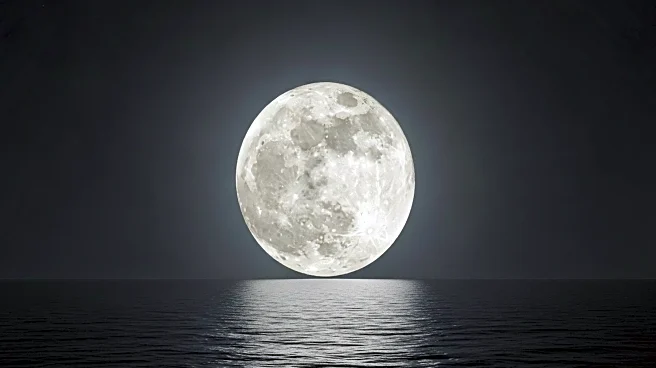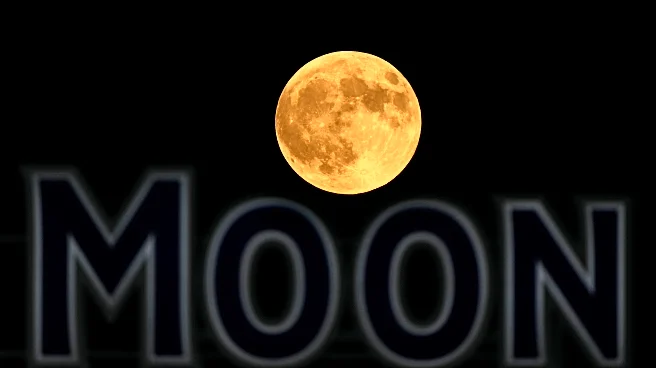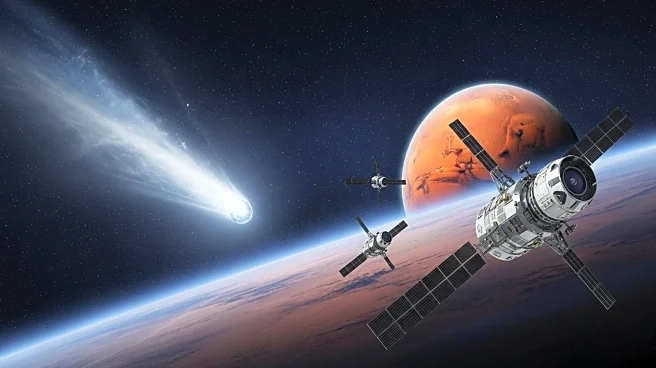What is the story about?
What's Happening?
The first supermoon of the year is set to appear on Monday night, offering a slightly larger and brighter view of the moon. This astronomical event occurs when the full moon is closer to Earth in its orbit, making it appear up to 14% bigger and 30% brighter than the faintest moon of the year, according to NASA. Derrick Pitts, chief astronomer at the Franklin Institute in Philadelphia, notes that while supermoons are not particularly rare, they can coincide with other celestial events such as lunar eclipses. The moon will pass within approximately 224,600 miles of Earth during this occurrence. The supermoon is visible worldwide without special equipment, provided the skies are clear.
Why It's Important?
Supermoons offer a unique opportunity for people globally to engage with astronomy and appreciate the natural phenomena of the night sky. This event can spark interest in astronomical sciences and encourage educational activities related to space and celestial bodies. For scientists and educators, supermoons serve as a tool to promote public understanding of lunar cycles and the dynamics of Earth's orbit. Additionally, such events can boost tourism in areas known for clear skies and stargazing, potentially benefiting local economies.
What's Next?
Following October's supermoon, additional supermoons are expected in November and December, providing further opportunities for observation. In 2026, two lunar eclipses are anticipated, including a total eclipse visible across much of North America, Asia, and Australia in March, and a partial eclipse across the Americas, Africa, and Europe in August. These events will continue to offer educational and observational opportunities for astronomy enthusiasts and professionals alike.
Beyond the Headlines
Supermoons and other celestial events can have cultural significance, often inspiring art, literature, and folklore. They can also influence scientific research, as astronomers study the effects of the moon's proximity to Earth on tides and other natural phenomena. The visibility of such events can foster a sense of global unity, as people across different regions share the experience of observing the same celestial occurrence.
AI Generated Content
Do you find this article useful?















